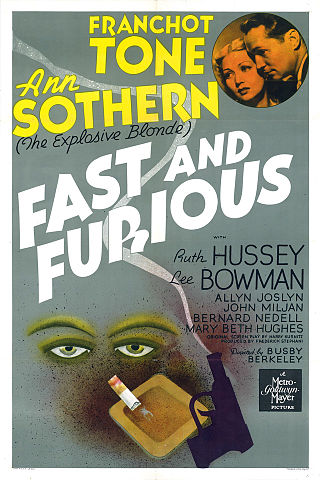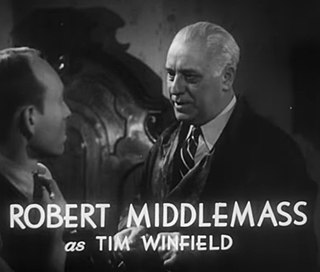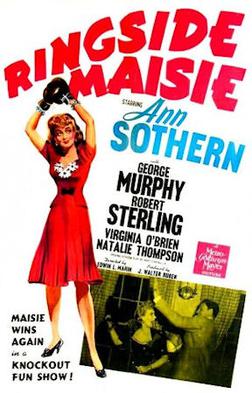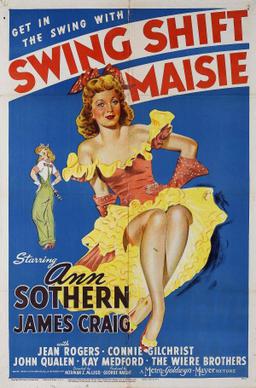
The Hartford circus fire, which occurred on July 6, 1944, in Hartford, Connecticut, was one of the worst fire disasters in United States history. The fire occurred during an afternoon performance of the Ringling Bros. and Barnum & Bailey Circus that was attended by 6,000 to 8,000 people. The fire killed at least 167 people, and more than 700 were injured. It was the deadliest disaster ever recorded in Connecticut.

Thousands Cheer is a 1943 American musical comedy film directed by George Sidney and released by Metro-Goldwyn-Mayer. Produced during the Second World War, the film was intended as a morale booster for American troops and their families.

Half Moon Investigations is a novel by the Irish author Eoin Colfer. It was first published in United States in March 2006 and was released in the UK and Ireland on 1 June 2006. The paperback edition was released in the UK on 5 July 2007. It has also been adapted as a television series starring Sebastian Charles & Rory Elrick, which aired on the BBC from January 2009.

The Ann Sothern Show is an American sitcom starring Ann Sothern that aired on CBS for three seasons from October 6, 1958, to March 30, 1961. Created by Bob Schiller and Bob Weiskopf, the series was the second starring vehicle for Sothern, who had previously starred in Private Secretary, which also aired on CBS from 1953 to 1957.

Fast and Furious is a 1939 American mystery comedy film directed by Busby Berkeley. The film stars Franchot Tone and Ann Sothern as Joel and Garda Sloane, a crime-solving married couple who are also rare book dealers. It is the last of a Metro-Goldwyn-Mayer trilogy, along with Fast Company (1938) and Fast and Loose (1939). However, different actors played the couple each time.

The Last Alarm is a 1940 American crime film directed by William Beaudine and starring veteran character actor J. Farrell MacDonald.

Arson, Inc. is a 1949 American film noir directed by William Berke. It is also known as Firebug Squad and Three Alarm Fire.

Robert Middlemass was an American playwright and stage actor, and later character actor with over 100 film appearances, usually playing detectives or policemen.

Let's Fall in Love is a 1933 American pre-Code romantic musical film starring Edmund Lowe and Ann Sothern. Released by Columbia Pictures, the film was directed by David Burton and written by Herbert Fields.

Seven Sinners is a 1936 British thriller film directed by Albert de Courville and starring Edmund Lowe, Constance Cummings and Felix Aylmer. In the U.S. it was known under this title and also as Doomed Cargo. The screenplay concerns an American detective and his sidekick, who travel from France to England to take on a gang of international criminals.

Ringside Maisie is a 1941 American sports comedy film directed by Edwin L. Marin and starring Ann Sothern, Robert Sterling and George Murphy. It is the fifth of ten pictures in the Maisie series. This was Sothern and future husband Sterling's only film together.

The Firechasers is a 1971 British crime film directed by Sidney Hayers and starring Chad Everett, Anjanette Comer, and Keith Barron. It was written by Philip Levene.

Swing Shift Maisie is a 1943 romantic comedy film directed by Norman Z. McLeod. It is the seventh in a series of 10 films starring Ann Sothern as Maisie, preceded by Maisie Gets Her Man (1942) and followed by Maisie Goes to Reno (1944). Her co-stars are James Craig and Jean Rogers.

The UpStairs Lounge arson attack, sometimes called the UpStairs Lounge Fire, occurred on June 24, 1973, at a gay bar called the UpStairs Lounge located on the 2nd floor of the 3-story building at 604 Iberville Street in New Orleans, Louisiana, in the United States. Thirty-two people died and 15 were injured as a result of fire or smoke inhalation. The official cause is still listed as "undetermined origin". The primary suspect, a gay man with a history of psychiatric impairment named Roger Dale Nunez who had been ejected from the bar earlier in the day, was never charged and died by suicide in November 1974.

Debora Green is an American physician who pleaded no contest to setting a 1995 fire that burned down her family's home and killed two of her children, and to poisoning her husband with ricin with the intention of causing his death. The case was sensational, and covered heavily by news media, especially in the Kansas–Missouri area, where the crimes occurred. Though Green has petitioned for a new trial twice in recent years, her requests have not been successful.

Undercover Maisie is a 1947 American comedy film directed by Harry Beaumont and starring Ann Sothern, Barry Nelson, and Mark Daniels. It was produced by Metro-Goldwyn-Mayer, the final film of the ten film Maisie series starring Ann Sothern as ex-showgirl Maisie Ravier. In this series entry, Maisie Ravier decides to join the Los Angeles police force. The previous film was Up Goes Maisie.

Fifty Roads to Town is a 1937 American romantic comedy film directed by Norman Taurog and starring Don Ameche and Ann Sothern. The film is based on a book of the same name by author Frederick Nebel. This is the third novel Nebel wrote.

Arson for Hire is a 1959 American crime drama film directed by Thor L. Brooks. The film stars Steve Brodie, Lyn Thomas and Tom Hubbard, who also wrote. Arson squad investigator Johnny Broderick and his partner Ben Howard, investigate a warehouse fire, and find evidence of arson.

Black Sheep is a 1935 American drama film directed by Allan Dwan and starring Edmund Lowe, Claire Trevor, and Tom Brown. It was produced by the Fox Film Corporation. The film's sets were designed by the art director Duncan Cramer.

The "Erinsborough High Fire" is a storyline from the Australian television soap opera Neighbours that ran on 20 and 21 October 2015, airing over episodes 7237 and 7238. These episodes were broadcast on 4 and 5 November 2015 in the United Kingdom. The storyline sees the fictional Erinsborough High School engulf in a deliberately-lit fire, which leads to a long arson mystery. Involving half the cast, the storyline was Neighbours' big stunt event of the year and came about when Paul Robinson sells the school to Eden Hills Grammar for it to be closed, causing the staff and the students to protest in a school sleep-out. Many characters' have their storylines climaxed whilst being trapped in the fire, including the love triangle between Brad Willis, Lauren Turner and Terese Willis when Brad chooses to save Lauren over Terese. Expecting mother Amber Turner and Susan Kennedy are trapped in a classroom during the fire when Amber goes into labour and the two are forced to decide whether to "fight or flight" in "genuinely frightening" scenes.




















